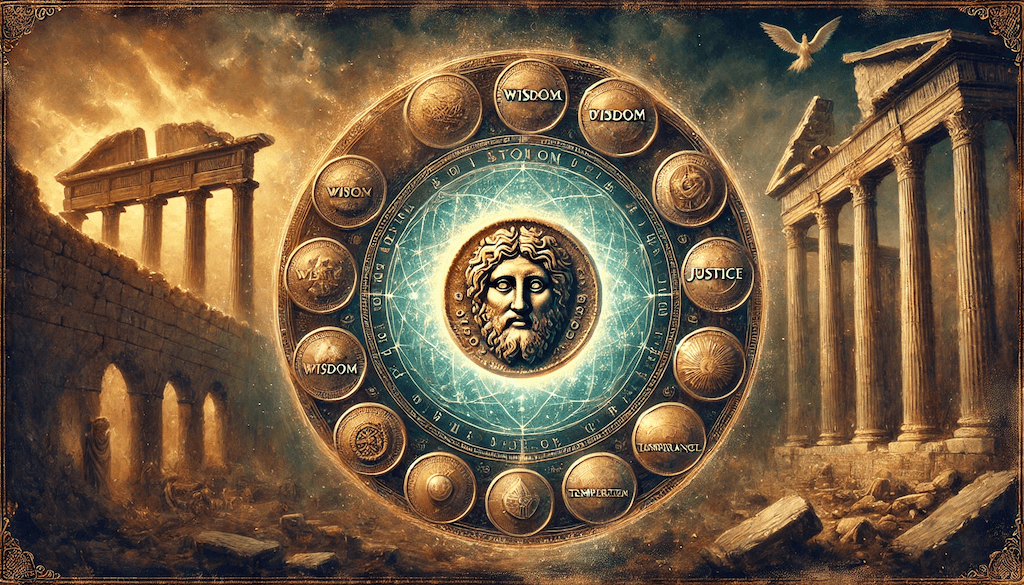The Enigma of the Ancient Stoic Coin

In the heart of a bustling city, amid the cacophony of modern life, there lived a man named Thomas. He was a typical urban dweller, ensnared in the relentless chase for success, wealth, and recognition. His life, though outwardly impressive, was a silent battlefield of stress, anxiety, and unfulfilled desires. Thomas’s soul yearned for something more profound, something ancient and enduring.
One rainy afternoon, seeking refuge from the city’s relentless pace, Thomas wandered into a quaint antique shop tucked away in a forgotten alley. The shop, filled with relics of bygone eras, exuded an air of mystery and timelessness. As he browsed through the artifacts, an old, tarnished coin caught his eye. It was unlike any he had ever seen, engraved with symbols and a language that seemed both ancient and profound.
The shopkeeper, an elderly man with a twinkle in his eye, noticed Thomas’s interest. “Ah, you have a keen eye,” he said, his voice tinged with wisdom. “That coin is a rare piece, believed to be from the time of the great Stoic philosophers. It is said to hold the wisdom of the ancients, a guide to inner peace and resilience.”
Intrigued, Thomas purchased the coin and left the shop, feeling an inexplicable connection to the artifact. That night, as he held the coin under the dim light of his study, he noticed an inscription in tiny, intricate script. With some effort, he deciphered the words: “Amor Fati” – love of fate.
Curiosity piqued, Thomas delved into the world of Stoicism. He discovered that “Amor Fati” was a central tenet of Stoic philosophy, advocating acceptance and love for everything that happens in life, good or bad. This idea resonated deeply with Thomas, who had spent his life resisting and resenting the challenges he faced.
Inspired by the ancient wisdom, Thomas decided to embrace the principles of Stoicism. He began practicing negative visualization, imagining the loss of things he cherished to appreciate them more deeply. Each morning, he reflected on the potential challenges of the day, not with dread, but with a sense of preparedness and acceptance.
Gradually, Thomas noticed a shift within himself. The daily stresses that once overwhelmed him began to lose their grip. He found himself calmer, more resilient, and more present in each moment. The coin, once a mere artifact, had become a symbol of his transformation.
One day, while walking through the same alley, Thomas encountered a young woman in distress. Her car had broken down, and she was late for an important interview. Remembering the Stoic principle of helping others and acting virtuously, Thomas offered his assistance. Together, they fixed the car, and she made it to her interview just in time.
Grateful, the young woman thanked Thomas and asked if there was anything she could do in return. Thomas smiled and handed her the coin. “This coin has guided me towards a more fulfilling life. May it bring you the same wisdom and peace.”
Years later, Thomas’s story of transformation became a legend in the city. The coin, passed from person to person, continued to spread the ancient Stoic wisdom, transforming lives and fostering a community of resilience and inner peace.
And so, the enigma of the ancient Stoic coin lived on, a timeless beacon of wisdom in a modern world, reminding everyone who held it that true peace comes not from external success, but from within.
By embracing the principles of Stoicism, we can find inner peace and resilience in the face of life’s challenges. Whether through a mysterious coin or a chance encounter, the wisdom of the ancients can still guide us today. Embrace the journey, love your fate, and discover the profound transformation that awaits.